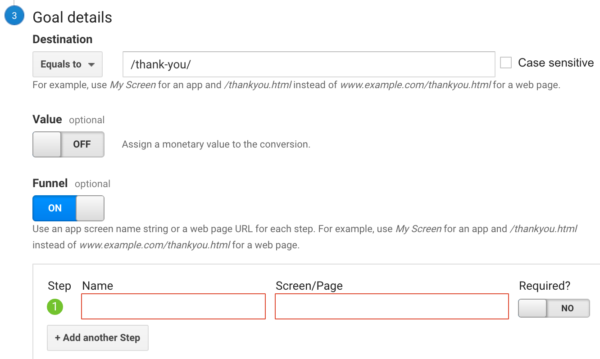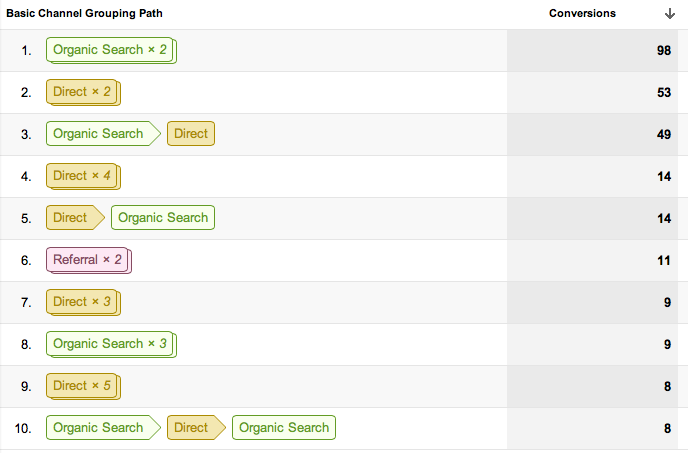What Data Is Google Analytics Goals Unable to Track: Find Out the Limitations
What Data Is Google Analytics Goals Unable to Track: Find Out the Limitations
Blog Article
Unveiling the Blind Spots: Understanding What Google Analytics Goals Can not Determine
In the realm of digital analytics, Google Analytics stands as a powerful device for monitoring and examining online customer communications. Recognizing what Google Analytics goals can not measure is crucial for getting an extensive view of user habits and engagement.
Customer Habits on External Operatings Systems
Recognizing how customers engage on external systems is essential for maximizing on the internet approaches. External systems, such as social media sites networks, reference internet sites, and on-line discussion forums, play a significant role in driving website traffic to a company's website. By assessing individual actions on these platforms, services can gain important insights into the effectiveness of their advertising initiatives and the preferences of their target market.
One secret aspect of individual actions on external platforms is the recommendation resource. By tracking where the customers are originating from, companies can recognize which systems are driving the most traffic to their web site. This info can help companies designate their sources better, focusing on the systems that yield the finest outcomes.

Offline Conversions and Communications
Assessing customer behavior on external platforms provides valuable insights right into on-line approaches; nonetheless, thinking about offline conversions and interactions is equally necessary for a thorough understanding of a firm's total efficiency. While Google Analytics succeeds at tracking on the internet interactions, it falls short in recording the complete client journey that typically includes offline touchpoints. Offline conversions, such as in-store acquisitions or phone queries, play a considerable function in lots of companies' success. Neglecting these interactions can cause an altered view of the performance of marketing projects and overall company performance.

Attribution Beyond Last Click
When diving right into the realm of digital marketing analytics, it comes to be necessary to look beyond the solitary touchpoint of the last click for a more thorough understanding of acknowledgment. While Google Analytics offers important insights right into user habits, relying exclusively on last-click attribution can be restricting - what data is google analytics goals unable to track. Attribution designs that go past the last click use a much more nuanced view of the customer journey, taking right into account all the touchpoints that result in a conversion
Attribution beyond the last click enables marketing professionals to designate credit report to different interactions along the conversion path, giving a clearer image of the effectiveness of different marketing networks. By checking out multi-touch attribution models such as linear, time degeneration, or position-based acknowledgment, services can better assign their marketing spending plans and enhance their methods for maximum impact.
Recognizing the impact of each touchpoint in the conversion process is crucial for making educated decisions and optimizing ROI. By accepting acknowledgment past the last click, companies can gain much deeper insights right into client behavior and customize their advertising efforts better.
Cross-Device and Cross-Browser Tracking

Likewise, cross-browser monitoring enhances cross-device monitoring by capturing customer behavior as they switch between different internet internet browsers. Recognizing how individuals connect with websites on various browsers can assist marketers optimize their online experiences to guarantee consistency and performance throughout various systems.
Qualitative Information and Individual Intent
Recognizing customer intent via qualitative information analysis is crucial for developing targeted electronic advertising approaches that resonate with the requirements and choices of the target market. Qualitative information offers understandings right into the 'why' behind individual actions, shedding light on inspirations, feelings, and choices that quantitative information alone can not catch. By examining individual comments, remarks, and communications, marketers can discover useful info about user intent, permitting them to customize their messaging, material, and offerings to better align with what their audience is looking for.
Qualitative data also aids in recognizing the context in which individuals engage with a website or application. This contextual understanding makes it possible for marketing experts you can check here to produce more pertinent and customized experiences, ultimately driving greater involvement and conversion rates. By diving into user intent with qualitative data evaluation, companies can gain a much deeper understanding of their target audience, bring about a lot more effective advertising and marketing techniques that fulfill users' company website needs and assumptions.
Conclusion
Finally, Google Analytics goals have constraints in determining customer actions on outside platforms, offline conversions, acknowledgment past last click, cross-browser and cross-device monitoring, and qualitative data associated with customer intent. what data is google analytics goals unable to track. It is very important for organizations to be conscious of these unseen areas in order to supplement their information evaluation with other tools and techniques to gain an extra extensive understanding of their target market and boost their general electronic advertising approaches
By evaluating individual actions on these systems, services can obtain important understandings into the effectiveness of their advertising initiatives and the choices of their target audience.
Analyzing user actions on exterior systems provides important insights right into on-line approaches; however, thinking about offline conversions and interactions is equally imperative for an extensive understanding of a business's general performance.In digital advertising analytics, relocating past last-click attribution to explore cross-device and cross-browser monitoring is essential for acquiring a holistic understanding of user interactions throughout numerous systems and tools. By analyzing customer responses, remarks, and communications, online marketers can discover useful info regarding user intent, allowing them to customize their messaging, web content, and offerings to much better line up with what their target market is looking redirected here for.
By delving into user intent via qualitative information evaluation, organizations can obtain a deeper understanding of their target audience, leading to more reliable advertising and marketing methods that satisfy users' demands and assumptions.
Report this page